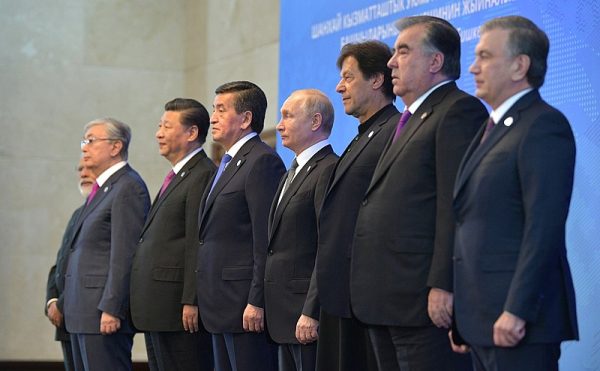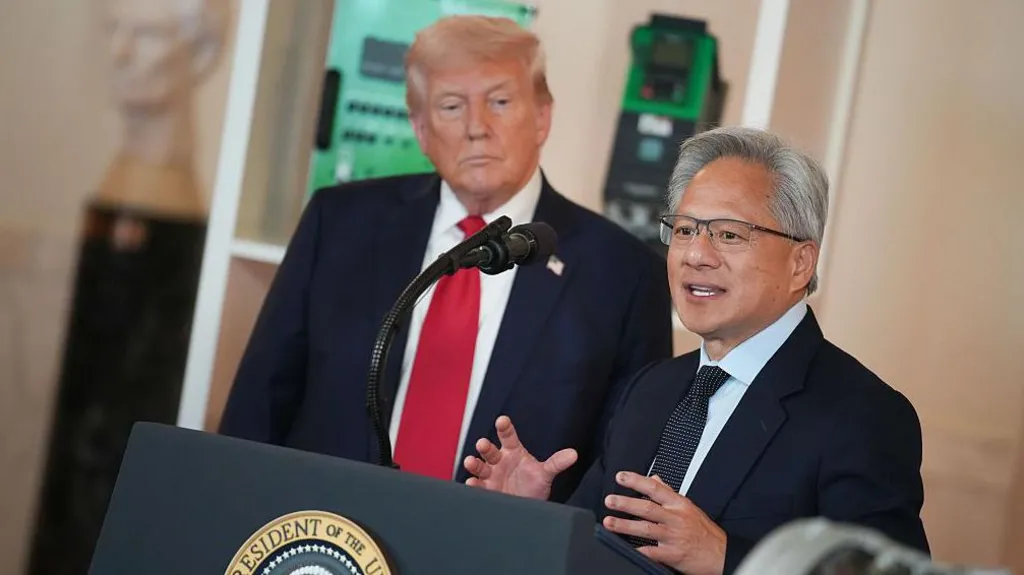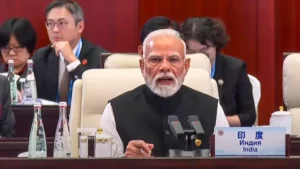Public Opinion on China Waning in Central Asia
China was among the first countries to recognize the independence of the Central Asian republics in the aftermath of the Soviet collapse, quickly establishing diplomatic ties with Kazakhstan, Kyrgyzstan, Tajikistan, Turkmenistan, and Uzbekistan in the first week of January 1992. Skipping forward 30 years, China has propelled itself to the position of Central Asia’s leading external partner; in the process, Beijing has invested previously unthinkable sums of money in the region and beyond. China’s hegemonic approach of pumping billions into Central Asia stems from a view of the region as a vital ingredient to its global infrastructure and soft power agenda.
Launched in 2013 by President Xi Jinping in Kazakhstan, what we now call the Belt and Road Initiative (BRI) is among the most ambitious mass infrastructure projects ever conceived. Chinese policymakers envisioned both land and maritime components, consisting of development and investment projects stretching from Southeast Asia to Europe, including parts of Africa. The BRI is modeled on the ancient Silk Roads of the westward Han Chinese Dynasty expansion of 206 BCE- 220 CE, which established thousands of miles of trade routes through modern-day Central Asia toward Europe, and southward to India and Pakistan. Under these plans, Xi’s flagship foreign policy undertaking sees Chinese companies and banks funding and building roads, 5G networks, power plants, ports, railways, and fiber optic cables around the world, significantly expanding Beijing’s political and economic clout through growing dependence.
What do Central Asians think of China’s approach to their home countries?
The Central Asia Barometer (CAB) Survey is a biannual large-scale research project that measures social, economic, and political atmospheres in Central Asian nations by conducting interviews with 1,000-2,000 respondents in each country. The survey has been done in several waves from 2017 to 2021. Data collected by CAB points to a steady decrease in public sentiment toward China from respondents surveyed in Kazakhstan, Kyrgyzstan, and Uzbekistan.
Diplomat Brief Weekly Newsletter N Get briefed on the story of the week, and developing stories to watch across the Asia-Pacific. Get the Newsletter
Within Kazakhstan and Uzbekistan, respondents have shown an increasingly negative view of China from 2017 to 2021. Kyrgyzstan has remained more consistently negative, with the number of those who indicated that they had a “very unfavorable” opinion of the nation steadily rising with each subsequent survey wave.
Enjoying this article? Click here to subscribe for full access. Just $5 a month.
China Remains the Region’s Dominant External Partner Amid Declining Public Sentiment
The sentiment of Kazakhstanis, Uzbekistanis, and Kyrgyzstanis toward China has followed a recent downward trend. At the same time, Chinese investment has dramatically increased.
Total Chinese investment in Central Asia was valued at $40 billion at the end of 2020, with over half having been funneled into Kazakhstan. The press service of the president of Uzbekistan reported a sharp increase in investment from Beijing beginning in 2018, with the total volume increasing steadily up to $9 billion by the end of 2021. In 2019, China invested a total of $301 million in Kyrgyzstan. Has this massive investment in the BRI project affected the mood of Central Asian citizens regarding China?
Across the five-year data period of survey waves collected by Central Asia Barometer for Kazakhstan, a significant decrease in public sentiment toward China is present, particularly a shrinking portion of those who viewed China as “somewhat favorable.” A possible key explanation for this trend can be found in the Kazakhstani response to human rights violations in Xinjiang, the Chinese region bordering Kazakhstan. The treatment of ethnic Uyghurs, Kazakhs, and Kyrgyz peoples in China’s largest region has sparked a huge number of protest events, particularly in Kazakhstan’s largest cities, Almaty and Nur-Sultan. On March 27, 2021, hundreds gathered in the aforementioned cities in addition to Oral, Shymkent, and Aktobe to protest creeping Chinese influence and the mass incarceration of indigenous Turkic-speaking communities in Xinjiang. On December 4, 2021, relatives of individuals detained in China staged a protest outside the Chinese Consulate in Almaty for the 300th consecutive day, demanding freedom for their relatives.
For many Kazakhs with family members detained in Xinjiang, the specter of Kazakhstan boosting economic ties and relations with China is unacceptable. Nur-Sultan must tread a delicate line between the delivery of vital investments from China, while also ensuring that domestic discontent regarding the government’s response to events in China does not boil to the level of unrest seen in January 2022. Many Kazakhs do not want to be aligned with China, in part due to the Xinjiang situation, and view President Kassym-Jomart Tokayev and his government as being complicit in the persecution of Turkic groups due to Kazakhstan’s massive economic dependence on Beijing.
In addition, with Chinese investment come Chinese workers and Chinese tech. Kazakhstanis remain staunchly opposed to these facets of Chinese influence. Concerns over China developing energy infrastructure in Kazakhstan, crowding out the job market with local workers, and forcing an increase in national debt are dominant within the population.
In April 2016, up to 2,000 individuals took to the streets in several cities to denounce planned changes to the land code that would have allowed foreigners to rent land for up to 25 years. While the government ultimately banned the sale of land to foreigners in 2021, the events clearly demonstrated public opposition to such proposals to be strong.
Enjoying this article? Click here to subscribe for full access. Just $5 a month.
Similarly, for those in Uzbekistan, attitudes toward China have nosedived in recent years. Those who viewed China in a “somewhat favorable” light dramatically decreased from a 70 percent high in spring 2018 down to just 32 percent in the fall of 2021, the most recent installment of the CAB Survey.
Between 2019 and 2022, the most extensive Chinese investments into the country have been injected into the cement sector, including multiple plant projects worth in some cases over $150 million in the Tashkent and Jizzakh regions. By 2020, Chinese debt owed by Uzbekistan grew to $3 billion, or 20 percent of total foreign debt. Concerns of a “debt trap” and creeping Chinese expansion in Central Asia under the veneer of honest development policies, being voiced by the United States, in particular, and echoing around the region, have grown progressively louder. For not just Uzbekistan, but all nations involved in the BRI, governments run the risk of pursuing a policy of overreliance on one primary creditor. In doing so, these governments may become victims of the creditor pursuing financial and economic levers of manipulation to pursue their own interests.
Uzbek President Shavkat Mirziyoyev has pushed on with a policy of playing great powers off against each other through a balanced engagement policy with the U.S., China, and Russia, building on the policies of his predecessor and Uzbekistan’s first president, Islam Karimov. Where the foreign policy of the two leaders differs is in the scale and intensity of cooperation executed by Mirziyoyev. China’s economic ties in Uzbekistan go far beyond any previous scale of foreign economic activity in the country’s independence era. Perhaps the dwindling opinion of Uzbekistanis on China stems in part from a perception of Mirziyoyev “overstepping” the mark and diverging from the values of the nation’s founding father in allowing one nation to gain such a dominant position. Economic dependence on China firmly goes against Uzbekistan’s historical policy of international neutrality and suspicions of any additional regional players.
The proportion of Kyrgyz citizens who perceived China in a “somewhat favorable” light across all survey waves remained consistent, without the steep declines of their Kazakh and Uzbek counterparts. Almost 50 percent of global foreign direct investment (FDI) into Kyrgyzstan comes from China, with approximately 80 percent being diverted into gold extraction and metallurgy projects.
Chinese investment has the potential to transform the critically undeveloped infrastructure system of the Kyrgyz Republic. The dire need for transport modernization and development is highlighted by the fact that rail transport accounts for just 5 percent of passenger and freight traffic across the nation. The proposed Kyrgyz-Uzbek-China railway, which currently only China can help realize, would be a vital boost for Kyrgyz domestic and regional connectivity but would enshrine economic dependence on China even further. When asked about China’s infrastructure efforts to date, former Transport Minister Berdaliyev said the tunnels and bridges constructed were “unlike anything Kyrgyzstan has seen before.” Perhaps considerations such as these played a role in shaping respondents’ opinions of China.
Similar to Kazakhstan, respondents in Kyrgyzstan may also have a negative view of China due to the latter’s treatment of ethnic Kyrgyz within the Xinjiang region. Activist groups have sprung up in Kyrgyzstan too advocating for the safety of their relatives trapped across the border and demanding that the Kyrgyz government and outside powers intervene on their behalf. Despite the light these activist groups and their protests have shed on this issue, Bishkek, much like Nur-Sultan, has opted to not address the allegations of human rights abuses. It appears that China’s efforts to provide Kyrgyzstan with much-needed improvements to the nation’s infrastructure have trumped the need to provide aid to ethnic Kyrgyz in Xinjiang.
Although attitudes toward China continue to wane in Kazakhstan, Uzbekistan, and Kyrgyzstan, Chinese economic expansion in Central Asia is showing no signs of slowing down. Despite injecting much-needed economic and infrastructural investment into Central Asia, China is at risk of widening an already existent “credibility gap” between successfully presenting its economic expansion vision for the region and procuring an acceptable political mandate to do so. A prime example of this can be found in the deteriorating security situation in Kazakhstan and Kyrgyzstan concerning the experiences of ethnic Kazakhs and Kyrgyz in Xinjiang. Outrage over the treatment of these ethnic minorities by the Chinese government has sparked protests, threatening to upset the delicate relationship Central Asian policymakers maintain with China. This domestic instability, coupled with the influx of Chinese workers, technology, construction projects, and investment, is likely to contribute further to a feeling of alienation, or a notion that ordinary citizens of the region are passive actors in the policymaking process, with no agency of their own.
Furthermore, labor strikes and expressions of political apathy toward China should be expected to increase, as seen in April 2022, when 100 local workers on a Chinese road construction project in Kazakhstan’s Zhambyl stopped work over complaints about pay and working conditions. In cases like these, Kazakh officials cannot be seen to be siding with Chinese companies, despite the importance of the projects they are undertaking, and their significance to the future Central Asian economy.
Despite China’s continued dominance within the region, the growing hostility of many Central Asia citizens toward Beijing had led to ramifications that may prove to impact Beijing’s credibility within the region in the future. This presents possible opportunities for other powers (like Iran) to capitalize upon this growing apathy and establish themselves within the region as a viable alternative to China.












